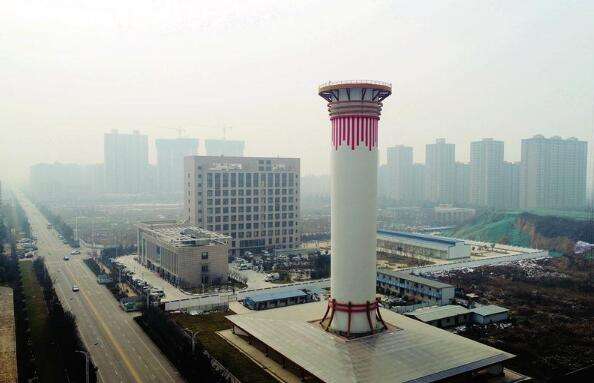
A skyscraper-sized air purifier curbed pollution by about 15 percent in a 10 square kilometer area over two years in one of China's most polluted cities, a research institute said in a statement on Thursday.
"It would take about 1,000 to do the same for the entire city of Xi'an," said Cao Junji, a research fellow at the Institute of Earth Environment at the Chinese Academy of Sciences at a conference on Tuesday.
The 60-meter-high air purifier cost 12 million yuan ($1.91 million) when it was installed in 2016 in the capital of Northwest China's Shaanxi Province, Cao said.
Xi'an became the first city to purify air using a solar filtering system at an annual operating cost of 200,000 yuan, Cao told the Global Times.
Asked if the price was worthwhile, Cao said most pollution countermeasures were costly but they were also necessary: Better air quality improves people's health and saves lives.
About 1,000 such buildings could handle 10,000 square kilometers, Cao said.
The tower was just an experiment, Cao warned. Final test results will decide whether to expand its use.
Cao has submitted a proposal for another 300-meter tower in Xi'an. He is also negotiating with Beijing, Hebei and Henan provinces.
A similar massive air tower provoked debate in Beijing two years ago.
The 7-meter tower was the brainchild of Dutch artist Daan Roosegaarde, but later changed its name from air purifier to "smog reminder" after failing to meet Chinese standards, news site thepaper.cn reported.
The tower was retained for "educational purposes," the Shanghai-based portal reported.
China last year launched a three-year scheme to combat air pollution: Cities above prefecture level must achieve good air quality 80 percent of days of the year by 2020.
Cities must reduce their PM2.5 readings by at least 18 percent by 2020, environment minister Li Ganjie said in February.
The density of airborne fine particulate matter PM2.5, pollution-causing particles that are about 3 percent of the diameter of human hair, is the key indicator of air pollution.
It is impossible to solve general air pollution with towers and machines as they only work for limited areas, Wang Gengchen, a research fellow at the Chinese Academy of Sciences' Atmospheric Physics Institute in Beijing, told the Global Times.
Combating smog was a long-term campaign and involved step-by-step efforts, Wang noted.
Emissions reductions are also vital to addressing air pollution, he said, but progressive measures can also backfire.
When governments in North China shut off coal supplies to make way for more eco-friendly gas, gas shortages and unfinished pipelines left some residents in the region out in the cold.


